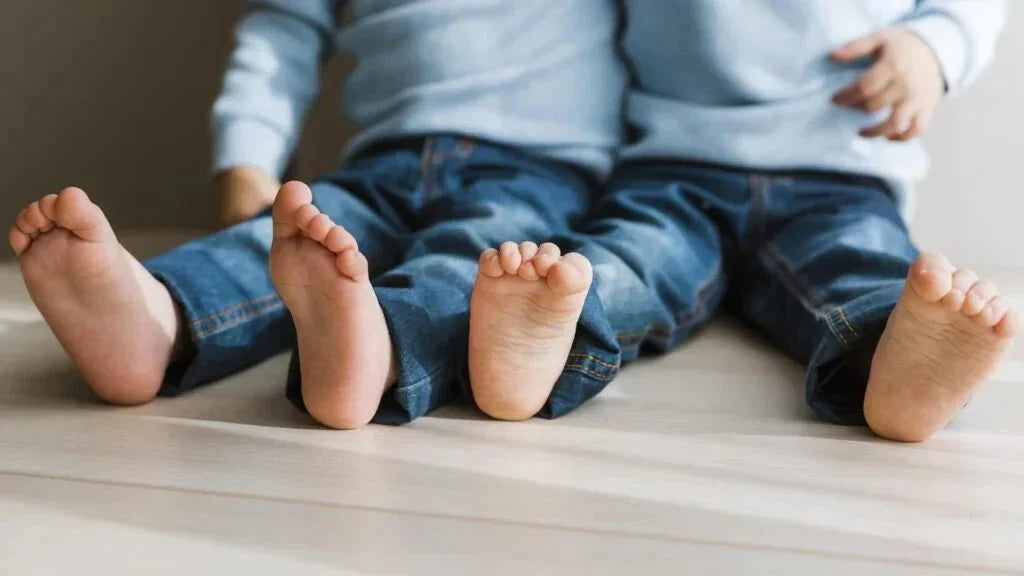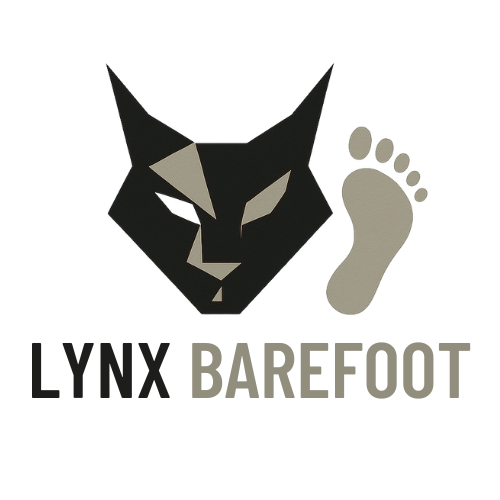Is Barefoot suitable for children? Benefits and advice.
Share

Barefoot isn't just a trend for adults ; children can also greatly benefit from walking barefoot, especially during their growth stage. In this article, we explore how barefoot footwear supports the natural development of children's feet and give you some tips for choosing the best barefoot shoes for them.
Why choose barefoot shoes for children?
During childhood, children's feet are still developing. Wearing stiff shoes with excessive support can interfere with this process, limiting natural movement and affecting the proper formation of bones, muscles, and joints.
Benefits of barefoot for children:
- Natural foot development: Barefoot allows children's feet to develop naturally. Without the restriction of rigid footwear, bones and muscles can grow and strengthen properly. This is crucial for preventing future podiatric problems, such as bunions or flat feet.
- Improved proprioception: Walking barefoot improves proprioception, that is, the body's ability to perceive its position in space. For children, this is especially important, as it helps them develop better balance, coordination, and control of their movements.
- Promoting a natural foot strike: Children who wear barefoot shoes tend to develop a more natural foot strike, which reduces the risk of joint problems, such as knee or back pain. Furthermore, footwear that allows the toes to move freely helps maintain correct posture from a young age.
Tips for choosing barefoot shoes for children
Choosing the right footwear for children is essential to ensure they get all the benefits of barefoot. Here are some tips to help you make the best choice:
- Lightweight and flexible models: As with adults, barefoot shoes for children should be lightweight and flexible. This allows the feet to move freely and the muscles to strengthen naturally. Avoid heavy shoes or those with thick soles that restrict movement.
- Wide toe box: Children's feet need space to grow and move. Make sure that barefoot shoes have a wide toe box that allows the toes to expand and move freely. This is crucial to prevent deformities and for the feet to develop correctly.
- Gradual transition: If your child has been wearing conventional footwear, it's important to make a gradual transition to barefoot shoes. Start with short periods of use and gradually increase the time. This will allow the feet to adapt to the new type of footwear without causing discomfort.
Is barefoot running safe for all ages?
A common concern among parents is whether barefoot is safe for all ages, especially for young children. The answer is yes, provided that the appropriate footwear is chosen and a gradual transition is made.
Important considerations:
- Supervision: It is important to supervise children during the first few days of using barefoot shoes to ensure that they feel comfortable and do not experience any discomfort.
- Appropriate surfaces: During the first few weeks, it is recommended that children wear barefoot shoes on soft and smooth surfaces, such as grass or carpets, so that their feet can adapt gradually.
- Consult a specialist: If your child has any foot condition or if you have doubts about using barefoot shoes, consult a specialist for personalized guidance.
Conclusion
Barefoot footwear can be an excellent option to support the healthy development of children's feet. With the right footwear and a careful transition, children can enjoy all the benefits of walking more naturally. At BareMotion, we offer a selection of barefoot shoes specifically designed for little ones. Explore our options and ensure the well-being of your children's feet from a young age.

